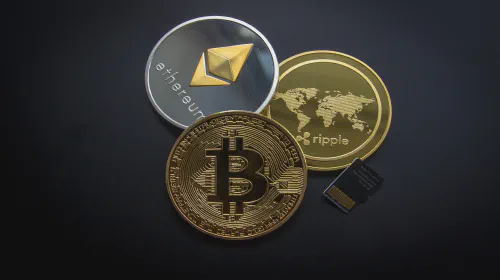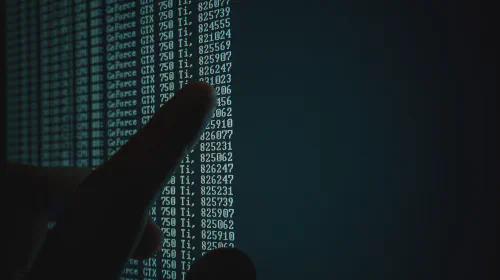Block Rewards vs. Transaction Fees - Why We Need Both
Salomon Kisters
Jun 1, 2022This post may contain affiliate links. If you use these links to buy something we may earn a commission. Thanks!
Blockchain miners are awarded certain units of the currency in the name of “block rewards,” and an additional amount called the “transaction fees” on successful completion of the process of mining.
What are Block Rewards?
A miner is awarded block rewards if they are the first to solve an intricate math problem, hence, generating a new block of verified cryptocurrency transactions. The block reward is in the form of tokens of the native cryptocurrency of that particular blockchain. The number of tokens to be rewarded is always set by the network.
Using a network of computers for this process, these competing miners verify every new block of transactions once it is created. When the math problem is solved, a new one is put on the way. In short, a block reward is the number of crypto coins you get if you succeed in mining a block of the currency.
This incentivized system has made mining extremely rewarding and appealing, due to which it is rapidly evolving. This is why most networks have added different safeguards in order to slow down mining and keep the supply of cryptocurrencies in the economy within a certain limit. Such securing techniques include Ethereum’s difficulty bomb and Bitcoin’s halving mechanism.
Statistically, if we look at the Bitcoin block reward, the amount is halved once every four years and is estimated to reach zero around the year 2140. Currently, the Bitcoin block reward consists of 6.25 freshly generated coins in addition to transaction fees. In 2024, this will be halved into 3.125 Bitcoins.
Bitcoin block rewards have been halved thrice since this concept was initiated in 2009 and will continue to do so till a total of 21 million coins are supplied. Once this happens, no more block rewards or new Bitcoins will enter circulation.
The block reward acts as an incentive for blockchain miners to process transactions made with the currency. In order for these currencies to work as intended, keeping a fixed record of such transactions is important.
The blockchain system is what contains these records, and it cannot be altered once created. The miners are only responsible for verifying and updating the transactions in the blockchain. Block rewards act as a payment in return for doing this ‘service.’
What are Transaction Fees?
Transaction fees, in purely mathematical terms, are the difference between the amount of cryptocurrency sent and the amount of it received. It is basically a fee paid for transferring a certain amount of cryptocurrency from one wallet to another.
In conceptual terms, transaction fees reflect the speed with which a user wants their transaction verified on the blockchain. These fees vary depending on how busy the blockchain is. If a user wants to speed up their transaction, they can offer a higher fee. Hence, miners can prioritize validating transactions that are high-paying.
This mostly happens when the Mempool is overloaded, which is where all the pending transactions are queued. This means that the more congested the network is, the higher the fees will be. Usually, transaction fees are immutable on cryptocurrency exchanges; however, they are adjustable if the users are using cryptocurrency wallets.
Two more factors also determine the size of transaction fees. The first is the size of the transaction, and the other is the demand for block space. Usually, miners are restricted to allow only a certain number of transactions because there is a limit on some networks. When there are many people exchanging the currency simultaneously, the demand for block space increases. This means that there are now more transactions waiting to be validated in the queue.
At times, this demand for block space soars so high that networks get clogged, resulting in an unsustainable surge in the transaction fees. The larger the transaction, the more block space it requires, and hence, it takes more time to confirm such exchanges.
Usually, the blockchain networks that can cater to a larger number of transactions offer a much lower fee. Today, many well-known crypto projects charge different rates. These include Bitcoin, Ethereum, Ripple, Litecoin, etc. In short, the higher the efficiency of the network, the lower its transaction fees.
This fee was initially levied in the hopes that it would prevent the blockchain from getting clogged up since users were now expected to pay a certain amount to get their transaction validated.
However, as time passed, a more important use for transaction fees was discovered. With the halving of Bitcoin, the cost of mining increases to provide miners with an incentive to verify new blocks.
Why Do We Need Block Rewards and Transaction Fees?
Block rewards and transaction fees are two incentives provided to blockchain miners. The former composes the majority of miners’ revenues when this system was first lodged, while the latter is what miners will depend on once the system runs out of block rewards.
There is a rumor circulating that whether miners are paid in transaction fees or block rewards does not affect the safety of the blockchain. However, this is not the case. Readers must note that the blockchain system has a decentralized approach. It means that it is not being looked over by any central authority to ensure its security. This is where block rewards and transaction fees come into the picture. They act as an incentive for the miners to safeguard the network.
Furthermore, block rewards are the only way of issuing new cryptocurrency into the market. When a miner succeeds in validating an exchange, they are rewarded in the native cryptocurrency of the block. It is important to note that different currencies adhere to different reward schedules.
Those with a limited supply of currency go through a halving process the same as Bitcoin. This way, the reward for mining decreases every four years. It also means that once the rewards reach the value of zero, transaction fees will be the only incentive left for the miners, which is why its existence is vital for the system.
Not just this, but transaction fees act as a barrier protecting the blockchain from getting overloaded by transactions. In fact, this was the initial function of this innovative reward. It was introduced in hopes of keeping malicious users away from the network, but eventually, it became a significant part of the blockchain reward system.
The transition of this fee from being a spam-blocker to a mining reward happened over time. Initially, for Bitcoin, the transaction fee was 0.01 BTC, which is equal to a substantial $137 at today’s rate. Back in 2010, it did not seem like a huge problem; however, some users realized that they were at a loss when they had smaller transactions to carry and such a huge fee to pay.
The Bitcoin developers then worked on increasing the block size, due to which the transaction fees can now be lower than 0.01 BTC. In this way, the transaction fees have become an important factor contributing to the network’s overall health.
Other than Bitcoin, cryptocurrencies like Ethereum and Ripple also realized those transaction fees are indeed an essential part of the network and hence, adopted similar strategies to keep the miners invested.
Block Rewards and Transaction Fees to Sustain the Market
Block rewards and transaction fees are both necessary for sustaining the crypto economy. The reward of the block is essential since it is the only way through which new currency is generated, allowing its further growth. These incentives gave birth to a decentralized economic system where miners verify the blocks and are responsible for safeguarding the network with their technological and financial investments.
It is crucial to keep the miners motivated enough to want to spend their time ensuring the security of the system through these rewards, or else the network will eventually crumble to dust. Furthermore, spending more time on computing power will allow miners to mine more cryptocurrency tokens, therefore, generating more supply and maintaining the ecosystem as intended.
Block Rewards vs. Transaction Fees – The Bottom Line
In conclusion, we now understand that in order to maintain a healthy crypto economy, block rewards and transaction fees are two essential components of the network. In the future, when the former runs out, the entirety of the crypto transactions will be dependent on the latter. This is why they both hold their separate importance, and omitting either one would only result in the downfall of the whole network.
Stay informed with the latest insights in Crypto, Blockchain, and Cyber-Security! Subscribe to our newsletter now to receive exclusive updates, expert analyses, and current developments directly to your inbox. Don't miss the opportunity to expand your knowledge and stay up-to-date.
Love what you're reading? Subscribe for top stories in Crypto, Blockchain, and Cyber-Security. Stay informed with exclusive updates.
Please note that the Content may have been generated with the Help of AI. The editorial content of OriginStamp AG does not constitute a recommendation for investment or purchase advice. In principle, an investment can also lead to a total loss. Therefore, please seek advice before making an investment decision.

DeFi Tokens vs. Coins - What is the Difference?
DeFi is everywhere. But what are DeFi tokens, and how are they different from coins?

How Many Consensus Algorithms Are There? An Overview
Proof of Work is just one of many consensus algorithms out there. But how many are there?

How to View the Activity of a Bitcoin Address
In this article, we'll guide you on how to check the activity of your bitcoin address so that you can monitor transactions across the blockchain. Let's go.
Protect your documents
Your gateway to unforgeable data. Imprint the authenticity of your information with our blockchain timestamp